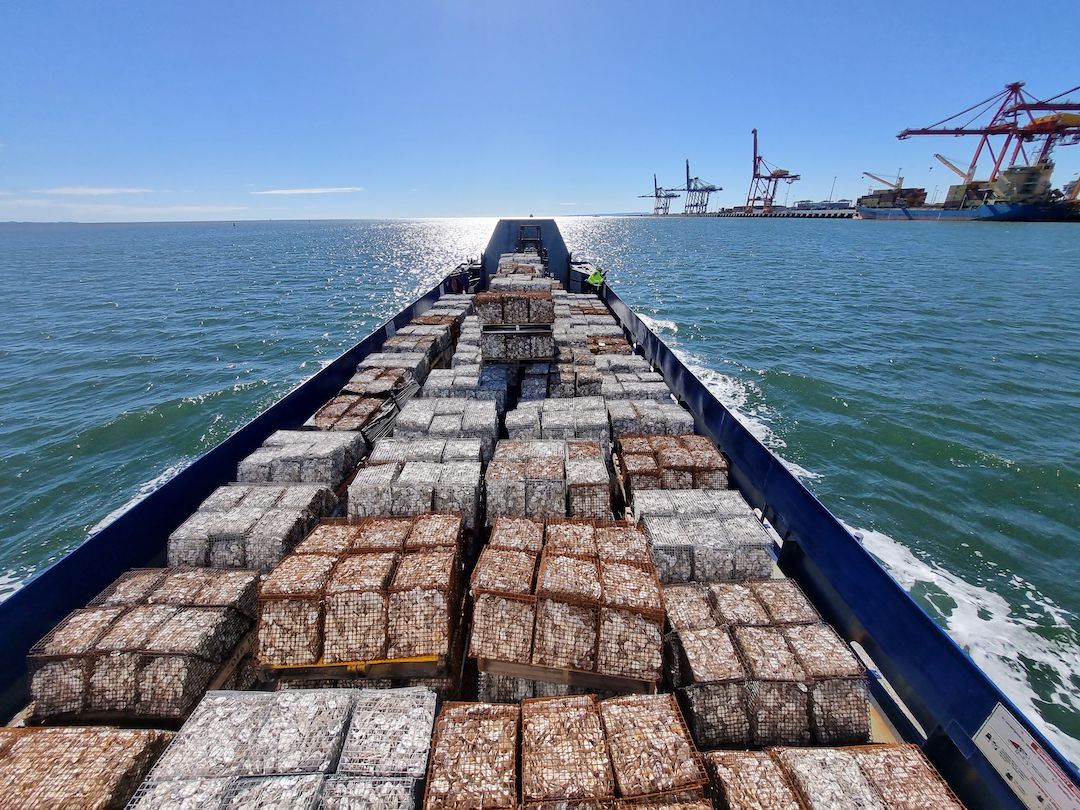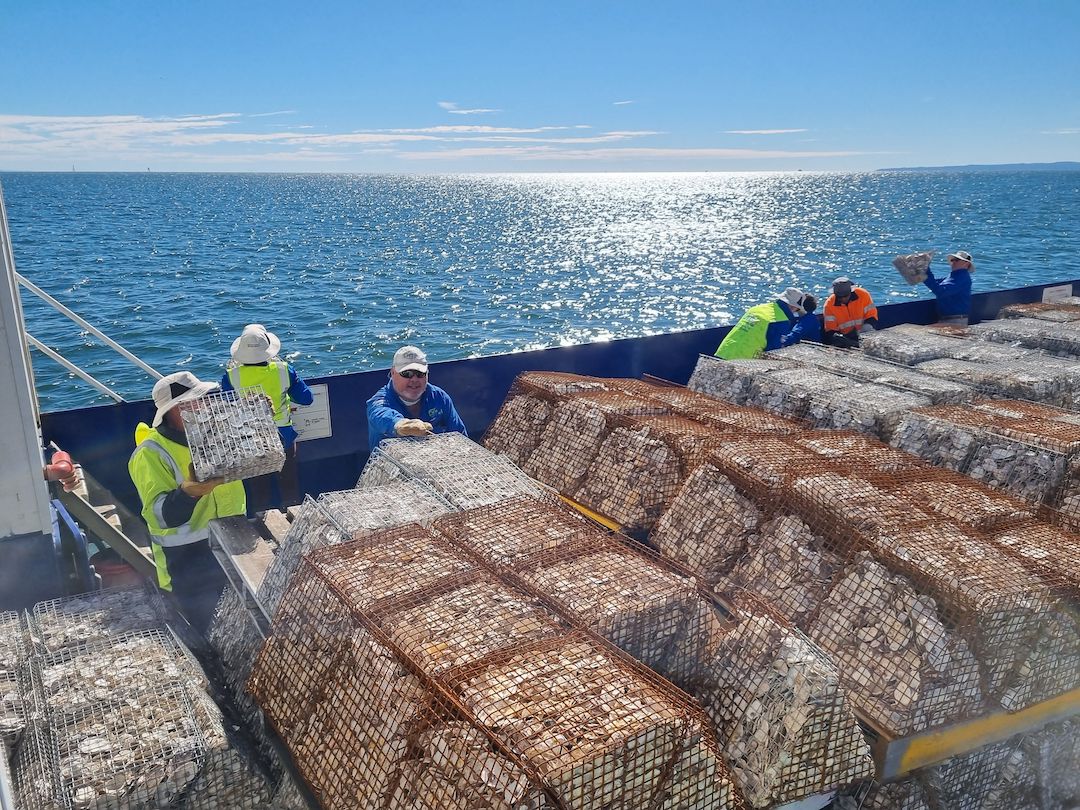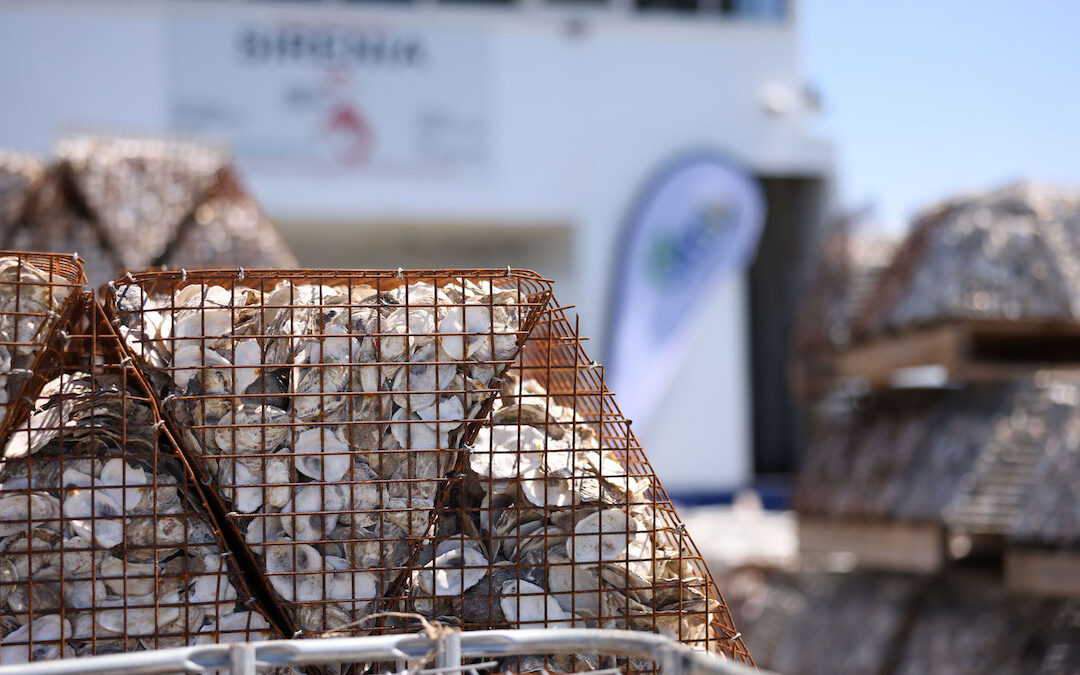The largest ever community-driven shellfish reef restoration project in Australia continues to make a difference.
Shellfish reefs are vital living ecosystems that serve as homes and breeding grounds for many marine species. OzFish, the charity behind this ambitious project, hopes to restore the rapidly declining shellfish reef population in order to generate biodiversity in the Moreton Bay region.

The Robust Oyster Baskets (ROBs) being carried on a barge through Moreton Bay © OzFish
Reef rehabilitation
In order to encourage the development of shellfish reefs, OzFish has been releasing Oyster Baskets throughout Moreton Bay in an attempt to grow new oyster reefs.
Recently, a group of volunteers deployed 2,265 Robust Oyster Baskets (ROBs), specially designed regeneration baskets. This is a continuation of a project which began two years ago, which aims to restore 100 hectares of shellfish reef in Moreton Bay over the next 10 years. Since then, over 6000 ROBs have entered the water in the Moreton Bay area.
The recent release of ROBs contained more than 2.7 million shells, bringing the total number of deployed shells to around 7.8 million since the beginning of the project.
OzFish is one of the leading environmental conservation charities in the country. They are dedicated to increasing sustainability and biodiversity in fishing grounds such as rivers, lakes and estuaries. Their team of volunteers has undertaken projects including riverbank planting, clean-ups and educational programs. The shellfish reef restoration project is one of their most successful programs to date.

A volunteer dropping ROBs into the water © OzFish
Volunteers and vitality
ROBs are made using degradable steel mesh and recycled oyster shells. These materials are collected by volunteers at the shell recycling centre in the Port of Brisbane. They come to the facility as waste from restaurants, bars and wholesalers, and are cleaned by these volunteers before being given a second life in these ROBs.
Once released into the water, the baskets surrounding the oyster shells degrade over the course of around two years. This means oysters and other shellfish have ample time to clump together, resulting in a structure of oyster shells and living shellfish that is left behind once the basket dissolves.

ROBs being unloaded in Moreton Bay © OzFish
Encouraging ecosystems
Over the last 150 years, 96 percent of shellfish reef habitats have been destroyed in Moreton Bay, leaving marine creatures without a home and shellfish basically extinct.
Each ROB is equivalent to 626 new homes for shellfish. They also offer shelter and safety to around 1120 other animals such as crabs, worms and prawns. In total, the deployment of these ROBs has facilitated the return of 11 million new animals to the site, helping to increase biodiversity and restore the ecosystem.
OzFish, the organisation behind this scheme, are responsible for restoring 10 hectares of shellfish reefs so far. This means that 2,500 tonnes of additional harvestable fish have been drawn to the Moreton Bay area every year, contributing to the local economy. They are working closely with University researchers to monitor the results of their shellfish reef project, identifying the most effective methods of restoration and ensuring the project continues to positively impact the region.

A close-up of a ROB © OzFish
According to Robbie Porter, OzFish Senior Special Projects Officer, “Together we are making a significant impact on the health and sustainability of our oceans.
“I believe this is the best shellfish restoration project in Australia without question. Queensland should be very proud of what we’re achieving.”
“We extend our heartfelt gratitude to the exceptional OzFish Central Moreton Chapter volunteers for their tireless dedication in supporting this work. Without their time and ingenuity, this project wouldn’t be possible.”
The project will continue to support shellfish reef restoration over the coming years, helping the local fishing community to engage in sustainable and effective practices, and facilitating increased biodiversity in the region.
Learn more about the need to protect our marine ecosystem by clicking here.

